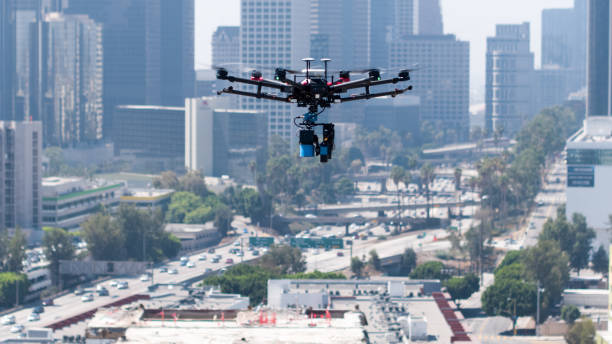Introduction:
Farming and agriculture, integral to sustaining communities and economies, come with a unique set of challenges and uncertainties. From unpredictable weather patterns to market fluctuations, farmers face a myriad of risks that can impact their livelihoods. In this comprehensive guide, we delve into the importance of insurance for farming and agriculture, exploring the various types of coverage available and how they play a pivotal role in safeguarding agricultural ventures.
Understanding the Risks in Agriculture:
Agricultural activities are inherently exposed to a range of risks that can jeopardize productivity and financial stability. Some of the key risks in farming include:
- Weather-Related Risks: Farmers are at the mercy of weather conditions, and events like droughts, floods, storms, or extreme temperatures can significantly impact crop yields and livestock health.
- Market Fluctuations: The prices of agricultural commodities are subject to market fluctuations influenced by factors such as global demand, supply chains, and geopolitical events. Farmers may face challenges in securing profitable prices for their products.
- Crop and Livestock Diseases: The health of crops and livestock is susceptible to diseases and pests. Outbreaks can lead to substantial losses in terms of reduced yields, increased expenses for disease control, and potential damage to the reputation of the farm.
- Equipment Breakdowns: Modern agriculture relies heavily on sophisticated machinery and equipment. Breakdowns or malfunctions can disrupt operations and lead to costly repairs or replacements.
- Liability Risks: Farms that open to the public, offer agritourism activities, or use contractors face liability risks. Accidents, injuries, or property damage can result in legal claims and financial liabilities.
Types of Insurance Coverage for Farming and Agriculture:
- Crop Insurance: Crop insurance provides protection against losses in crop yields due to various perils, including adverse weather conditions, pests, and diseases. It helps farmers recover a portion of their losses and stabilizes income, ensuring financial resilience during challenging growing seasons.
- Livestock Insurance: Livestock insurance covers the financial losses incurred by farmers due to the death, theft, or accidental injuries of their livestock. This coverage is crucial for protecting the financial investment farmers make in raising and breeding animals.
- Farm Property Insurance: Farm property insurance protects the physical structures and assets on the farm, including barns, silos, equipment, and stored produce. It covers damages or losses resulting from perils like fire, storms, vandalism, or theft.
- Liability Insurance: Liability insurance safeguards farmers from the financial consequences of third-party claims for bodily injury or property damage. It is particularly important for farms that engage in agritourism activities, sell products directly to consumers, or collaborate with contractors.
- Equipment Breakdown Insurance: Equipment breakdown insurance, also known as farm machinery insurance, covers the repair or replacement costs of essential machinery and equipment in case of breakdowns. This ensures minimal disruption to farm operations.
- Business Interruption Insurance: Business interruption insurance provides coverage for the financial losses incurred when a covered event, such as a natural disaster, disrupts farm operations. It compensates for lost income and helps farmers resume normal activities.
- Farm Auto Insurance: Farm auto insurance covers vehicles used for farming activities, including trucks, tractors, and other specialized vehicles. It protects against damages, injuries, and liabilities arising from accidents involving farm vehicles.
- Diversified Agriculture Insurance: Diversified agriculture insurance is designed for farms engaged in various activities, such as crop production, livestock raising, and agritourism. It offers a comprehensive coverage package tailored to the specific needs of diversified farms.
Navigating Insurance for Farming and Agriculture:
- Assess Farm Risks: Begin by conducting a thorough assessment of the risks specific to your farm. Consider the type of crops you grow, the livestock you raise, and the unique challenges posed by your geographical location. This assessment will guide you in selecting the most relevant insurance coverage.
- Understand Crop Insurance Options: Crop insurance comes in various forms, including Multiple Peril Crop Insurance (MPCI) and crop-hail insurance. Understand the differences between these options and choose the one that aligns with the specific risks your crops face.
- Customize Livestock Coverage: Livestock insurance can be customized based on the types of animals you raise and the potential risks they face. Consider factors such as the value of the livestock, the likelihood of diseases in your region, and the financial impact of losses.
- Evaluate Property and Liability Needs: Farm property insurance and liability insurance are foundational for protecting your assets and mitigating legal risks. Evaluate the value of your farm property and the potential liabilities you may encounter to determine the appropriate coverage limits.
- Explore Bundling Options: Many insurance providers offer bundled coverage options that combine different types of insurance into a comprehensive package. Bundling can often result in cost savings and streamline the management of your insurance policies.
- Consider Deductibles and Coverage Limits: Carefully review the deductibles and coverage limits associated with each insurance policy. Determine a deductible that aligns with your risk tolerance, and ensure that the coverage limits are sufficient to address potential losses.
- Stay Informed About Government Programs: Governments often offer agricultural insurance programs and subsidies to support farmers. Stay informed about any available programs in your region, as they can complement your private insurance coverage and enhance your risk management strategy.
- Regularly Review and Update Coverage: The agricultural landscape is dynamic, with evolving risks and challenges. Regularly review and update your insurance coverage to reflect changes in your operations, the introduction of new crops or livestock, and any modifications to your farm infrastructure.
Conclusion:
Insurance is a cornerstone of risk management for farmers and agricultural businesses, providing a safety net against the unpredictable nature of farming activities. From protecting crops and livestock to safeguarding against property damage and liabilities, the right insurance coverage is instrumental in ensuring the financial resilience of agricultural ventures. By understanding the specific risks associated with their operations and tailoring insurance policies accordingly, farmers can cultivate security and navigate the complexities of the agricultural landscape with confidence. In an industry where resilience is key, insurance for farming and agriculture emerges as a crucial tool for sustaining and growing agricultural endeavors.


